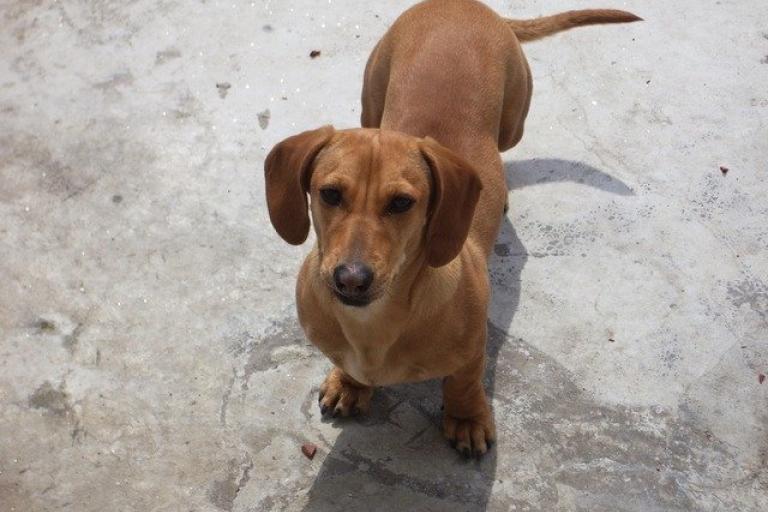CDN - Griscelli Type 1 Analogous Syndrome (Dog)
The test examines whether the mutation leading to the Griscelli type 1 analogous syndrome in dogs is present in the MYO5A gene. The mode of inheritance is autosomal recessive, so that only animals in which both genes are defective will develop the disease. Affected newborns show neurological symptoms shortly after birth as well as a dilution of the coat colour similar to the D-locus. They do not seek the proximity of the littermates, cannot hold themselves upright and fall on their sides. They do not react to environmental stimuli. The severity of the symptoms requires humane euthanasia.
Genetic test in Shop: Article No.: GSD144
Symptoms
- diluted fur
- neurological problems: cannot hold themselves upright and fall on their sides
- do not react to environmental stimuli
General Information
- It is a congenital disorder with changes evident at an early age showing sparse coloration of skin and hair
- It is caused by genetic disorders of melanocytes (pigment cells) and Purkinje cells (nerve cells) in the cerebellum
- The name of the disease refers to a hereditary disorder in humans described by Paris pediatrician Claude Griscelli in an initial publication in 1978.
Test information
This mutation test detects the presence or absence of the MYO5A:c.4973_4974insA mutation.
Genotype and lab report
Inheritance: autosomal recessive
→ The disease only occurs if both alleles of the gene are affected by the mutation (gs1/gs1). Dogs that have only one allele with the causative mutation (N/gs1) are clinically healthy carriers.
Genotypes:
N/N = genetically normal
The dog has no predispositions for GS1 and therefore cannot pass it on to its offspring.
N/gs1 = a carrier
The dog is a clinically healthy carrier. 50% of the variation is passed on to the offspring, who are then also carriers.
gs1/gs1 = affected
The dog carrying this variation is affected and won't live long enough to reach maturity.
Recommendations
- Carrier animals can be bred to normal animals (N/gs1 x N/N). Before the offspring are used in breeding, they should be tested whether they are normal or carriers.
- Breeding two carrier animals (N/gs1 x N/gs1) should be avoided as there is a 25% chance that the offspring will be affected.
- Affected animals (gs1/gs1) do not survive long enough to breed with.
Literature
Christen, M.; de le Roi, M.; Jagannathan, V.; Becker K. and Leeb, T.: MYO5A Frameshift Variant in a Miniature Dachshund with Coat Color Dilution and Neurological Defects Resembling Human Griscelli Syndrome Type 1, Genes 2021, 12(10), 1479; https://doi.org/10.3390/genes12101479

